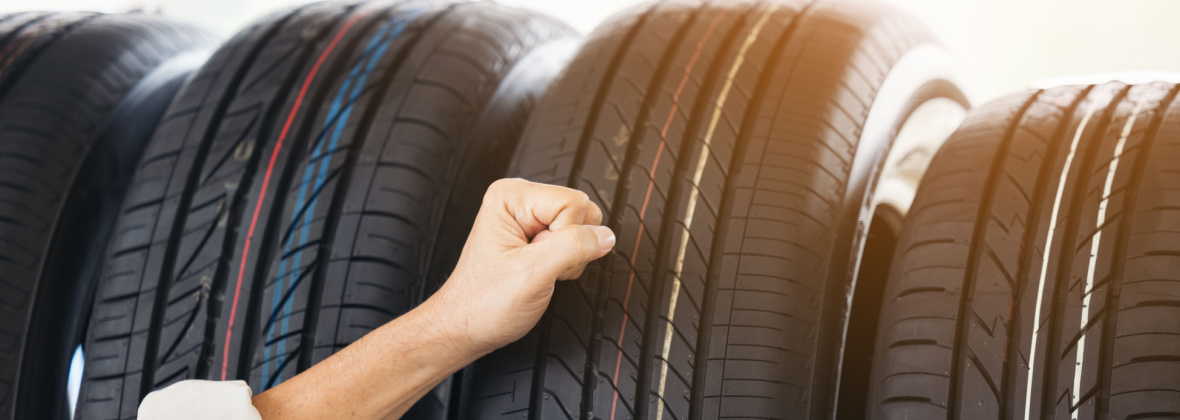How To Buy Tires Like A True Tread Head: Shop Smart With TIRECRAFT
March 7, 2023
Tires

Looking to buy tires, but not sure where to start? Your local TIRECRAFT is here to help.
Today’s post shares a few tips from the TIRECRAFT team to turn tire tyros into bonafide tread-heads, so you can make the best possible choice for your unique vehicle, driving needs, and budget.
Read on to learn more, or contact your local TIRECRAFT to start a free consultation and get personalized tire recommendations.
How To Buy Tires Like A True Tread Head: Shop Smart With TIRECRAFT
1. Asses Your Driving Routine
There’s a tire out there for just about every type of driver. Finding the right fit for your driving routine not only ensures your needs are met, but also makes sure you aren’t paying for features you won’t use.
With that in mind, think carefully about your driving routine. Are you more of a highway driver, an off-road adventurer, or a cross-town commuter, racking up most of your mileage in short trips in start-and-stop city traffic?
Highway drivers will do well with tires featuring high speed capabilities, or, for truck drivers, “all-terrains,” which blend on and off-road performance features. Conversely, dedicated off-road adventurers may need mud terrain tires, while city drivers will likely want something with decent fuel economy, ride comfort, and all-season performance.
2. Assess Your Local Weather Conditions
If you live somewhere with mild winters, all-season tires might suffice, but the majority of Canadians feel winter tires are necessary to keep them safe in the snow.
As a general rule, if temperatures fall below 7 degrees during the winter, you should invest in all-weather or winter tires, which will bear the “three-peak mountain snowflake” symbol on their sidewall, indicating that they meet the Tire and Rubber Association of Canada’s (TRAC) basic requirements for Severe Snow Service. This is true even if you do not experience heavy snowfall in your area, since all-season compounds stiffen up and lose performance as soon as temperatures drop below this threshold.
Additionally, you should consider your local precipitation levels. If you live somewhere that gets a lot of rain, you’ll want to look for tires with high-density siping and water-evacuation channels, which together provide wet traction and hydroplaning resistance.
3. Consider Your Budget And Storage Capacity
As mentioned above, the majority of Canadians now choose to equip snow tires in the winter, but this isn’t the right choice for everyone.
If you’re on a tight budget or you lack sufficient tire storage space, it might not make sense to buy two sets of tires, especially when you factor in the extra changeover fees that come with them.
If that’s the case, but your local weather and driving needs still demand snow performance, all-weather tires might be the perfect fit. These tires are often described as a middle ground between snow tires and all-seasons, with special compounds and variable tread designs that work in all four seasons, and your local TIRECRAFT carries all the top brands.
Conversely, if you’ve got room in the budget (and in your home or garage), your best bet will be to invest in two sets of tires: one for warm and wet conditions, and another for winter. Not only will you enjoy the best possible tire performance, but you’ll be eligible for insurance discounts, too!
4. Consider Your Vehicle’s Car Tire Size, Load, And Speed
No matter what you drive, finding the manufacturer-recommended tire size is easy. You’ll find it listed in your owner’s manual, as well as on the driver’s side door jamb, and on the sidewall of your OEM tires. Sometimes this information will also be listed on the glove box door or gas tank hatch.
Most readers will need “P-metric” tires, which are intended for passenger vehicles, such as cars, minivans, SUVs, and some light-duty pickup trucks. Others may need “LT-metric” tires, which are intended for light trucks, and can be readily identified by the “LT” letters in the tire code.
Additionally, you’ll want to be sure your new tires meet the manufacturer’s recommendations for rim diameter (listed in inches), load index, and speed index, all of which is contained within the tire code. Tire tyros need not concern themselves with the precise meaning behind these ratings—just make sure the code on your new set matches up with your OEM tires, and you’re good to go.
Go Pro With TIRECRAFT: Buy Tires Like A True Tread Head
For personalized recommendations based on your unique vehicle, budget, and driving needs, get in touch with your local TIRECRAFT. Our tire selection is unmatched, and we give you more ways to save via our exclusive tire promotions, customer loyalty rewards, and competitive pricing.
Back

